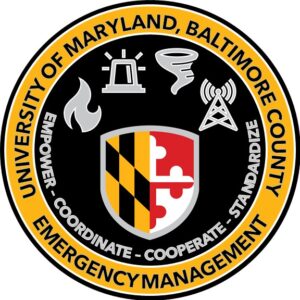UMBC must have a comprehensive Emergency Management program to remain resilient. Regardless of the hazard, we must take unified action to support our community of students, staff, faculty, and visitors. UMBC supports individual and organizational readiness. We encourage our community to uphold the University’s core values during even the most difficult of times.
The University’s Emergency Manager oversees planning and supports each College, Department, and affiliate with tools, training, and services. This includes prevention, preparedness, response, recovery, test, training, and exercises, as well as continuity of operations. For any Emergency Management assistance, please contact:


John Schaible
Emergency Manager, University Police Department
Administration Building, 6th floor, Room 609
Email: schaible@umbc.edu
Office: (410) 455-2572, Cell: (443) 981-9028
Use this link to schedule a meeting with me